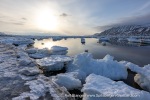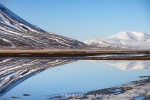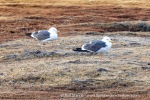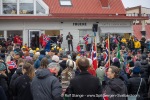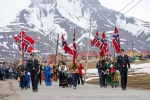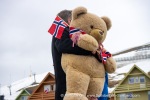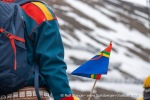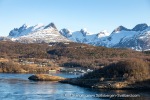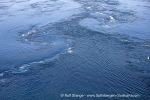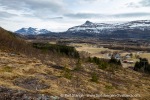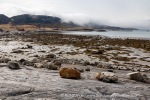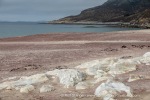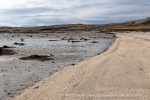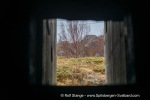-
current
recommendations- Liefdefjord
New page dedicated to one of Spitsbergen's most beautiful fjords. Background information and many photos.
- New Spitsbergen guidebook
The new edition of my Spitsbergen guidebook is out and available now!
- Liefdefjord
New page dedicated to one of Spitsbergen's most beautiful fjords. Background information and many photos.
Page Structure
-
Spitsbergen-News
- Select Month
- May 2025
- April 2025
- March 2025
- February 2025
- January 2025
- December 2024
- November 2024
- October 2024
- September 2024
- August 2024
- July 2024
- June 2024
- May 2024
- April 2024
- March 2024
- February 2024
- January 2024
- December 2023
- November 2023
- October 2023
- September 2023
- August 2023
- July 2023
- June 2023
- May 2023
- April 2023
- March 2023
- February 2023
- January 2023
- December 2022
- November 2022
- October 2022
- September 2022
- August 2022
- July 2022
- June 2022
- May 2022
- April 2022
- March 2022
- February 2022
- January 2022
- December 2021
- November 2021
- October 2021
- September 2021
- August 2021
- July 2021
- June 2021
- May 2021
- April 2021
- March 2021
- February 2021
- January 2021
- December 2020
- November 2020
- October 2020
- September 2020
- August 2020
- July 2020
- June 2020
- May 2020
- April 2020
- March 2020
- February 2020
- January 2020
- December 2019
- November 2019
- October 2019
- September 2019
- August 2019
- July 2019
- June 2019
- May 2019
- April 2019
- March 2019
- February 2019
- January 2019
- December 2018
- November 2018
- October 2018
- September 2018
- August 2018
- July 2018
- June 2018
- May 2018
- April 2018
- March 2018
- February 2018
- January 2018
- December 2017
- November 2017
- October 2017
- September 2017
- August 2017
- July 2017
- June 2017
- May 2017
- April 2017
- March 2017
- February 2017
- January 2017
- December 2016
- November 2016
- October 2016
- September 2016
- August 2016
- July 2016
- June 2016
- May 2016
- April 2016
- March 2016
- February 2016
- January 2016
- December 2015
- November 2015
- October 2015
- September 2015
- August 2015
- July 2015
- June 2015
- May 2015
- April 2015
- March 2015
- February 2015
- January 2015
- December 2014
- November 2014
- October 2014
- September 2014
- August 2014
- July 2014
- June 2014
- May 2014
- April 2014
- March 2014
- February 2014
- January 2014
- December 2013
- November 2013
- October 2013
- September 2013
- August 2013
- July 2013
- June 2013
- May 2013
- April 2013
- March 2013
- February 2013
- January 2013
- December 2012
- November 2012
- October 2012
- September 2012
- August 2012
- July 2012
- June 2012
- May 2012
- April 2012
- March 2012
- February 2012
- January 2012
- December 2011
- November 2011
- October 2011
- September 2011
- August 2011
- May 2011
- April 2011
- March 2011
- February 2011
- January 2011
- December 2010
- November 2010
- September 2010
- August 2010
- July 2010
- June 2010
- May 2010
- April 2010
- March 2010
- February 2010
- November 2009
- October 2009
- August 2009
- July 2009
- June 2009
- May 2009
- April 2009
- March 2009
- February 2009
- January 2009
- December 2008
- November 2008
- October 2008
- August 2008
- July 2008
- June 2008
- May 2008
- April 2008
- March 2008
- February 2008
- April 2000
- Select Month
-
weather information
-
Newsletter

| Guidebook: Spitsbergen-Svalbard |
Home → May, 2024
Monthly Archives: May 2024 − News & Stories
New governmental Svalbard-declaration
The Norwegian government has presented a new “Svalbardmelding”, a new government policy statement for Svalbard politics for the upcoming years. It is the first one since 2016.
Strengthening Longyearbyen as an attractive place to live for Norwegian families will be a focus for the Norwegian government. Another one will be better control of critical infrastructure, certainly including Longyearbyen’s energy supply. Better (but not necessarily more) flats are another political goal, and so is strengthening employment rights. Svalbard’s science landscape will see a “science office”.
More details will have to wait a while. We left Longyearbyen in the afternoon with good old SV Antigua and we are looking forward to some beautiful days in northwestern Spitsbergen. News will have to wait a while, but the travel blog should get some updates over the next couple of days 🙂
Polar fox birth on film
The Norwegian Institute for Nature Research (NINA) has filmed a polar fox mother giving birth to 8 cute little fox babies. This remarkable event took place in captivity in mainland Norway, within a project designed to release polar foxes into the wild.
Click hiere to access a short video on Youtube showing segments of the birth. It is really worth seeing, even if you don’t understand the Norwegian comments (it is about the researcher’s interest to learn more about survival rates in and outside the den).
Furthermmore, there is a livestream from the artificial den. Don’t miss it while there is still some action in there! 🦊🐱🐱🐱🤩
P.S. in case the above link to the livestream does not work, try to access the one on NINA’s website. It appears to change sometimes.

Polar foxes near Ny-Ålesund: probably siblings. Photo taken in August, several months after they were born (symbolic image).
Reindeer with rabies near Ny-Ålesund
A reindeer was observed near Ny-Ålesund in early May that showed unusual behaviour that pointed towards rabies, including partly paralysed hind legs. The animal was later, however, not found again so a rabies infection could not be confirmed although it appears likely.

Rabies is dangerous both for animals and humans (symbolic image).
Rabies outbreaks have been recorded several times in Svalbard. The pathogen may for example travel long distances with polar foxes that can migrate on sea ice. Long-distance migrations such as from Russia to Spitsbergen or from Spitsbergen to Canada is possible. Different mammal species such as foxes, reindeer, seals and dogs may be affected, and the disease can be very dangerous also for humans. It is generally strongly advised not to touch any dead animals.
Distance regulations for polar bears in force from 2025
As expected, the Norwegian Parliament has passed new regulations regarding minimum distances to be kept from polar bears (and other stuff). The new rules will thus come into force in 2025.
This means that a minimum distance of 300 m is required to be kept from any polar bear, regardless of the circumstances. If a polar bear is discovered within this distance or if it comes closer (swimming or walking on ice or land), then you have to move away. This includes boats that are anchored. During spring (01 March – 30 June), the minimum distance is 500 metres.
This is valid anywhere in Norwegian waters such as Svalbard’s 12 mile zone.

A common way to observe a polar bear is from a ship. In the case, the bear was curious and it had decided to approach the ship. No disturbance or risk involved.
Nevertheless forbidden in Norwegian waters from 2025.
Comment
The issue has, as you might imagine, been matter for a heated public debate for some time, which has been reflected on this site more than once. There is no need to go into detail here again. Many, including a number of people with significant relevant experience, have expressed that the new regulations are rubbish, to put it bluntly. This includes this author. The new rules will do little for animal protection or to prevent risky situations, but they will greatly damage the tourism and film industry. The regulations in force so far forbid approaching a polar bear in any way that would involve a risk of disturbance or even danger to animal or people, and that is good enough. As far as there were problems, they were not due to a lack of regulation but rather a lack of control and enforcement. The lack of control and enforcement will continue in the future, but from 2025 on existing meaningful regulation will be replaced with overregulation.
Dangerous situations occur often in connection to camps or huts, and the new regulations will not make a difference here.
Ice in Adventfjord, spring in Adventdalen
Wed
22 May
2024
Some impressions from Longyearbyen’s near surroundings, where the snow began to disappear quite rapidly in early May. But there was quite a lot of drift ice in Adventfjord (and not only there) in early May, much to the delight of many in Longyearbyen who enjoyed the views.
- gallery anchor link: #gallery_3031
Click on thumbnail to open an enlarged version of the specific photo.
The two gulls are lesser black-backed gulls (that’s what I think, at least; gulls are a bit of a science), quite rare birds in Spitsbergen.
Meanwhile, the geese have arrived and gather on snow-free tundra areas in and near Longyearbyen. There are more and more of them every day, a beautiful time for birders and nature lovers.
“Ice in Advent Bay”: 1896 and 2024
The ice in Adventfjord reminded me much of an old image from 1896. This (below) is how the Englishman Martin Conway saw Adventfjord – Longyearbyen did not exist back then, but there was a hotel at Hotellneset, not far from where the airport is today.
Conway and his group were the first ones to cross Spitsbergen over land from Advent Bay, as it was known back then, to the east coast. Later he wrote the classic “The first crossing of Spitsbergen”, which is highly recommended by the present author.

“Ice in Advent Bay”. This is how Martin Conway saw Adventfjord in 1896.
It looked very similar in early May 2024.
17th May in Longyearbyen
17th of May is the Norwegian national day, a big day that is celebrated everywhere in Norway with flaggs, processions and cultural events.
Also in Longyearbyen. Here are some impressions from the central event, the assembly on the “Torget” (square) with speeches and subsequent procession. In addition, there was a range of other events from commemorations to an evening in the culture house with music etc.
Visit from Barentsburg, speeches translated to Russian
There were at least some visitors from the neighbouring Russian settlement of Barentsburg, namely a group of children who contributed with singing to the morning’s church service. Other than the children’s escorts, there was no adult delegation as no official representatives from Barentsburg were invited. All speeches were were translated into Russian. During the central assembling, Lokalstyreleder (“mayor”) Terje Aunevik found suitable words addressing the background of the day’s celebrations which emphasize family-friendly events, childrens’ procesions and culture in contrast to military parades, celebrating democracy and freedom rather than military victories such as certain neighbouring countries. Without explicitely mentioning Russia or the Russian war of aggression in the Ukraine, but clearly referring to these, Aunevik unmistakably highlighted the importance of democracy, freedom and peace.
- gallery anchor link: #gallery_3028
Click on thumbnail to open an enlarged version of the specific photo.
There may have been those individuals in the crowd who silently and possibly not without some sadness thought of the blow local democracy in Longyearbyen had suffered quite recently when non-Norwegian residents were deprived of their voting rights.
Sami symbols
The last picture shows a Sami national costume (“samekofte”) and flagg. It was not too long ago that public display of such Sami symbols on the national day was accepted. Just 10 years ago, it was allowed but often seen as provocative and hence still matter of a sometimes loud and more or less heated public debate. Longyearbyen has a small number of inhabitants with Sami roots (in an everyday context, most will perceive them as Norwegians, which is true but not the entire story).
Property for sale in Recherchefjord
It is almost tempting to write “Spitsbergen about to become Chinese”, but no, that is not the level we are working at here. That would be nonsense, although you might almost have believed it, looking at some recent headlines.
Property in Svalbard: that’s how it started
We have to go back to the beginning of the 20th century for a moment. Spitsbergen was no man’s land and companies, many small and a few larger ones, came and claimed rights, thinking mining would be a way to make a fortune up north. Most companies were far too small and did not have the experience or the funds to start mining at industrial level, but some did, such as John Munro Longyear’s Arctic Coal Company which founded Longyearbyen (then known as Longyear City) in 1906.

60 sqare km of property are now on offer in Recherchefjord – for 300 million Euro.
Many of the small companies quickly ran out of money, and some of them sold their claims to others. Many of the claims were overlapping. It took years to sort this mess out, a process that was required to be finished before the Spitsbergen Treaty could enter force in 1925.
Companies continued to sell their various properties also after 1925, and so did successors and heirs. Often it had become clear that there would never be any mining or other kind of land use before land or claims would be sold. Usually the Norwegian state secured properties and mining rights to get Svalbard’s land areas under control. By now, 99 % of Svalbard’s ground are owned by the Norwegian government. The Russian state-owned mining company Trust Arcticugol owns some smaller land areas in Isfjord (Barentsburg, Colesdalen/Grumant, Pyramiden, Erdmannflya) – and then there is Kulspids AS, one of many companies that were founded in the early 20th century to explore and exploit mineral resources.
Kulspids AS
Kulspids AS secured a land area of 60 square kilometres in inner Recherchefjord. Asbestos is one mineral found in the area and mining was attempted, but not successful. Kulspids AS still exists and still owns the property, which today’s owners of the company now want to turn into money, as was initially reported by Bloomberg. The story was quickly picked up by various Norwegian media including NRK.
“All bidders welcome” is the seller’s message, addressing individuals, companies and governments alike. It is pointed out that also governments such as the ones in China or Russia could buy the property, if a price could only be agreed on. And of course the geopolitical significance of arctic areas in general is also highlighted by Kulspids AS representative.
Geopolitical significance – or not
Whatever the geopolitical significance actually might include is, hower, unclear: any new owner, as well as the current one, has to comply with the Svalbard environmental law and the Spitsbergen (Svalbard) Treaty. This makes pretty much any kind of land use impossible. No future owner, including the government of China (or Russia, for that sake) would legally be able to build a hotel, a harbour, a research station, a mine or a military base. Nobody would even legally be able to drive a snow mobile without special permission from Norwegian authorities, which would be difficult to get. The geopolitical significance of the property beyond prestige is hence doubtful.
Considering the above, researcher Andreas Østhagen of the Fridtjof Nansen Institute recommends the Norwegian government to remain calm and not make a very expensive panic purchase, according to Svalbardposten. The minimum bid is set at the proud amount of 3.5 billion (yes, billion!) Norwegian kroner – currently about 300 million Euro. For comparison: at the latest comparable transfer in 2014, when a large property on the north side of Adventfjord was sold, the price was near one tenth of today’s minimum bid. Even then, the price was controversial – and mining or other land use would at least in theory have been possible, considering the property sold in 2014 was not part of any national park or other specially protected area.
Hence, it seems fair to assume that pointing at any geopolitical or other importance of the property in Recherchefjord or at potential buyers such as China primarily serve as a tool to push the price and to increase the pressure on the Norwegian government to secure the land for Norway. Nothing is so far known about any buyers actually being interested or any serious bids.
Meanwhile, a spokesperson of the Norwegian government said that the government had actually made an offer in the past which was considered generous considering that the property does not come with any land use potential. The offer was turned down by Kulspids AS. It was also said that because of an old contract between the government and Kulspids AS, the property can not be sold without government approval.
In any case, this is the very last major land area in Svalbard still in private hands. Once it is sold, the time of major properties changing from one owner to another will be over. There are very few other, small private properties in Svalbard. In those cases where for example a private person owns a house in Longyearbyen, the property as such does not include the land the house is standing on – this is already government property.
Longyearbyen locals: join Meander for a trip to Kongsfjord and Ny-Ålesund!
From 23 May (Thursday) evening to 26 May (Sunday) evening, that is.
The best things in life often come as a surprise. That’s how it is here and now: unexpectedly, sailing ship Meander has some days off in May. Staying in port is boring, so we rather sail and have some fun – locals only, at a cost-covering price!
Our idea is to schedule a 3 day trip, aiming for Ny-Ålesund and a look around in Kongsfjord, with several stops on the way there and back. Such as looking for walruses in Forlandsund, cruising in Kongsfjord and making a landing or two somewhere in these waters as it fits. This is our plan A; of course, ice and weather may have a say in this as well.

SV Meander last year on Spitsbergen’s north side.
Have a look at this pdf for all further details. Or email Meander‘s captain and owner Mario directly at info(at)sailing-expeditions.com if you are interested.
This season’s first triplog: with SV Meander from Alta to Bodø
The 2024 arctic saison has begun! We spent 10 days with SV Meander sailing in north Norway from Alta to Bodø. If you follow my travel blog on these pages then you know all about it and you have already seen a lot of pictures. Now the triplog is available. The triplog itself is in German, but it comes with plenty of photos well sorted in 3 galleries. Start here.

SV Meander in Trollfjord.
It is certainly worth clicking through the photos. We were very lucky on this trip, with a lot of sunshine and no really bad weather, almost a bit untypical for the area and that time of year, still late winter. And yes, the whales … but just have a look at the pictures.
Good SV Meander will keep sailing in north Norway also in the future, both in spring and in the late season, in November, when we count on seeing northern lights and orcas. Visit Sailing Expedition’s website for more information.
The next triplog will come in June, after the trip with Antigua 31 May – 08 June.
Polar circle, Saltstraumen and Kjerringøy
Sun
5 May
2024
A ship is clearly the best way to travel in a country with a coastline as Norway has ⛵️👍😎 as we did it the last couple of days with SV Meander. But believe it or not, there are other options. To round this chapter of my travels off, we had a good look around Bodø, from Saltfjellet with the polar circle in the south to Saltstraumen and Kjerringøy in the north. Beautiful places, some of which I am sure we will visit under sail as soon as the opportunity comes up.
A highlight for me was the sighting of moose – we don’t have them in Spitsbergen. We saw as many as nine of them just one evening! And no, that does not include the three reindeer in the first image with hoofed animals in the gallery below 😄.
- gallery anchor link: #gallery_3016
Click on thumbnail to open an enlarged version of the specific photo.
Engeløy-Bodø
Wed
1 May
2024
Now, on the last full day of the trip, north Norway presented itself the way it is generally known: grey and a bit wet. Not bad at all, no wind and heavy rain, just some moisture. Quite refreshing actually after all those sunny days.
After landing with the dingi on the beach of Bø, where we were greeted by a red fox, we followed a way to an area of rocky hills. Next to a sea eagle and some lovely views, we found remains of a rather dark chapter of history. During the second world war, the German occupiers built a huge coastal battery known as “Batterie Dietl” here on Engeløya, an equivalent of similar fortification with some huge cannons close to Harstad in Vesterålen.
In the afternoon, we had 48 miles to Bodø ahead of us and a series of presentations of board. Then, in the harbour of Bodø, the trip came to and end. It was a great one, blessed with a lot of good weather and wildlife – my thanks you all who were part of it in whatever way! The triplog will soon follow on a dedicated page within the section – surprise! – triplogs and photo galleries.
- gallery anchor link: #gallery_3013
Click on thumbnail to open an enlarged version of the specific photo.
Ships and rocks …
… are by no means a good combination. That is generally well known, but nevertheless, sometimes it happens that both meet.
It happened actually twice in Spitsbergen in April, shortly after the beginning of the season. To start with the good news: none of these incidences involved serious consequences for life and limb or the environment.
The French vessel Polarfront hit the ground close to the coast at Diabasodden in Isfjord. Soon it received help from the coast guard, who evacuated the 12 passengers and later pulled Polarfront off the shallow. The ship could sail back to Longyearbyen under its own steam. No damage was found upon later inspection. Investigations have not been finished yet, but “inattentive navigation” is suspected rather than technical reasons.

Polarfront (archive image).
Another case happened also in April, when Vikingfjord ran aground close to the shore in Magdalenefjord. 22 persons were on board, including 12 passengers. Vikingfjord came afloat again with high water, apparently without any damage.
Yet another incident happened at the west coast when a fire broke out on the sailing ship Linden. The fire could be brought under control and the ship sailed to Longyearbyen for inspection.
Comment
Nobody who takes part in any kind of traffic should ever say he or she would never be involved in an accident, such as grounding when it comes to shipping. Nevertheless, when a ship runs aground at some pace pretty close to the shore within generally well-known and well-charted waters, it may raise more than an eyebrow. Investigations still need to be carried out, but it seems to be a fair assumption that these invidents might well have been avoided with careful, proper navigation. Luckily, these cases remained without consequences for health and life of people or damage to the environment. What remains is probably economical trouble for the respective ship owners and tour oerators and political damage that might well later concern everybody who is sailing in these waters.
News-Listing live generated at 2025/May/02 at 17:34:39 Uhr (GMT+1)


